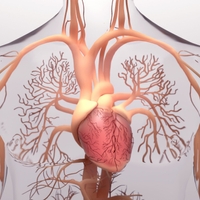
A new study has revealed that people with inflammatory bowel disease (IBD) have 50% more microplastics in their faeces than healthy controls. The concentration of microplastics was also higher for those with more severe IBD, suggesting an association between the two (1).
Inflammatory bowel diseases, including crohn’s disease and ulcerative colitis, are complicated, chronic, relapsing conditions characterised by inflammation of the gastrointestinal tract. More than 6.8 million people are currently estimated to be living with IBD worldwide, and the prevalence is rapidly rising (2). Although the cause of IBD remains unknown, evidence suggests that genetic, immunological, and environmental factors initiate inflammatory and autoimmune reactions (3,4).
Microplastics are plastic particles that appear in a configuration of particles and microscopic fibres ranging in size from 1 µm to 5 mm (about the width of a pencil eraser). They are either intentionally added to products, such as cosmetics, cleaning products, and medical applications, or have fragmented and degraded from larger plastic items, including plastics bags and food and beverage packaging. These microplastics contain toxic chemical additives that are known to affect human health, including bisphenol A (BPA), phthalates, triclosan, and brominated flame retardants (BFR) (5). Furthermore, they can absorb heavy metals, endocrine-disrupting chemicals, and microorganisms, which can severely impact human health (6,7,8,9,10).
Microplastics accumulate in the environment and the food chain. Humans are constantly exposed to microplastics through airborne particulate matter, consumer products, drinking water and food sources (11). After ingestion, larger microplastic particles bind to the intestinal epithelium while smaller particles can enter the circulation system and reach other tissues (12,13,14). Although the human health impacts are largely unknown, microplastics have been shown to cause intestinal inflammation, gut microbiome dysbiosis, oxidative stress, intestinal immune dysfunction and increased intestinal permeability in animal models (15,16).
In the current study, faecal samples from 50 healthy participants and 52 participants with IBD were analysed to determine the quantity and type of microplastics present. The participants filled in a questionnaire about the foods and drinks they consume, their working and living conditions over the previous year, the status of their IBD, and their demographic characteristics.
Analysis of the samples showed that faecal microplastic concentration in IBD patients (41.8 items/g dm ![]() ) was significantly higher than that in healthy people (28.0 items/g dm
) was significantly higher than that in healthy people (28.0 items/g dm ![]() ). The microplastics had similar shapes in the two groups, but the IBD faeces had more small (< 50 μm) particles. Furthermore, the faecal microplastic concentration was positively correlated with the severity of IBD.
). The microplastics had similar shapes in the two groups, but the IBD faeces had more small (< 50 μm) particles. Furthermore, the faecal microplastic concentration was positively correlated with the severity of IBD.
In total, 15 types of microplastics were detected in faeces, with the two most common in both groups being polyethylene terephthalate (PET; used in bottles and food containers) and polyamide (PA; found in food packaging and textiles).
The abundance and composition of microplastics were significantly affected by drinking and dietary habits, and working and living conditions. The participants with a higher abundance of faecal microplastics usually drank bottled water, consumed plastic-packaged fast food, or were exposed to dust in their working and living conditions. PET is the dominant food packaging material, and these plastics produce plastic flakes. Furthermore, microplastics in bottled water (which can be up to 22 times higher than tap water) are dominated by PET with fragment structures (17). The current study found that the highest abundance of microplastics detected in faeces was PET sheets.
The study is the first to compare levels of microplastic exposure between IBD patients and healthy controls. The results suggest that people with IBD may be exposed to more microplastics in their gastrointestinal tract. However, the results cannot prove a causal link between the two due to the study design. Therefore, further research is required to determine whether microplastics cause or contribute to the disease process in IBD or whether people with IBD accumulate more microplastics because of their disease.
Microplastics are ubiquitous in the environment and the food chain, and research is urgently required to assess the risk of microplastics to human health, including human exposure, pathogenesis, and toxicity effects.


